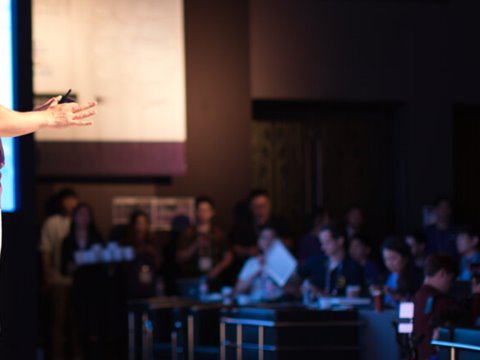
Artificial intelligence and automated terminals
During the last seven months we have covered several topics as part of the Port 2060 initiative that are important for the future of the shipping industry. Cargotec's experts have contributed articles that have stimulated lively debate on key issues such as sustainability, future technologies, automation, and port security. Futuristic ideas like flying spreaders fired the imagination and inspired discussion, while the ambitious nature of the initiative has generated significant media attention.
In this article I would like to look at the possible future developments of intelligent container terminals. With a number of automated terminals already in operation and several ongoing development projects in the automation field, it is worth thinking further about where we could be by 2060. By looking at the level of ‘intelligence’ in today’s automated terminals we can see how far we have progressed on our journey towards the potential terminal of the future.
Automated terminals need algorithms to solve various logistical problems such as planning, routing and locating both equipment and containers. Furthermore, they need to optimise these and many other similar operational issues based on several scriteria. A critical feature – and indeed the core of any successful automated terminal software solution – is in its ability to handle the exceptions that are certain to appear during operation. Today, we know that an automated system can deliver the same level of terminal performance (in terms of moves per hour) as a manual system. In ideal conditions and with the best algorithms, an automated system can even outperform a manual one. This is where the current level of technology has brought us.
Software that has the ability to learn is probably the next major step in technology development. This would mean that the system would be able to automatically adapt and improve its behaviour based on the data stream and the history of past actions. At the same time, sensor and navigation technology are key areas for development in terms of both hardware and software. Component prices in particular need to fall to a level that makes them attractive for the terminal environment, and reliability and accuracy must be improved at the same time.
What’s the next big step?
The answer to this question could lie in ubiquitous computing. Wikipedia defines ubiquitous computing as ‘a post-desktop model of human-computer interaction in which information processing has been thoroughly integrated into everyday objects and activities. In the course of ordinary activities, someone “using” ubiquitous computing engages many computational devices and systems simultaneously, and may not necessarily even be aware that they are doing so.’
To my mind, through ubiquitous technology, today’s manual terminals will move towards becoming automated terminals. The big question will be how to monitor and manage safety issues in a mixed manual-automated machine environment, which is totally unlike the current situation where manual and automated systems remain separate.
It may not be so distant future when we would be able to solve this problem in such a way that the automated machines and systems can safely be operated as part of a manned environment. Shape recognition, badge and RFID technology are already available, but are not yet reliable enough to enable the next step forward.
In many ways the necessary technology is already available – the only barrier is cost, and this is an issue that, with improved manufacturing technologies and increasing production volumes, will be solved.
I would like to thank all of you for being such active participants in the Port 2060 initiative. The initiative Port 2060 has been part of Cargotec’s ongoing drive to enhance our customers’ operational performance. The future might be much more or much less exotic than we imagine, but we need to be prepared for change – no matter what direction it takes us in.
This leg of the journey towards the port of the future is now approaching its end, but the discussion continues across many forums. We will continue to encourage people from the shipping industry and beyond to come together and exchange views.
I wish you all a happy and prosperous 2012. See you soon!
Related articles
Further reading
Subscribe and receive updates in your email
Tilaa julkaisujamme













